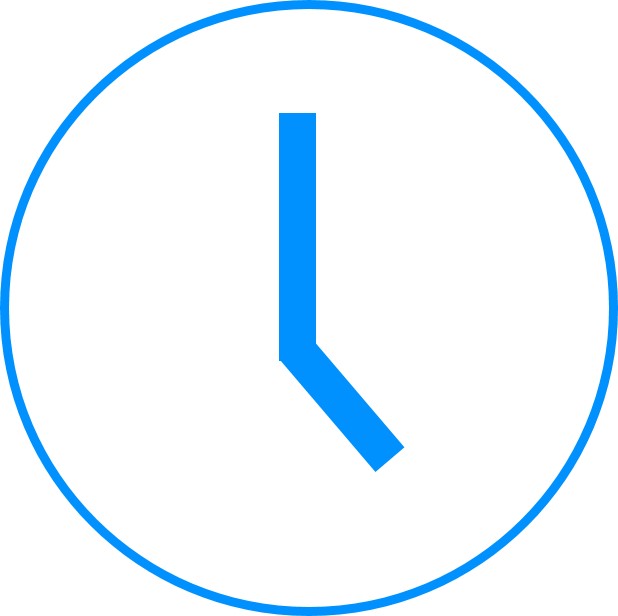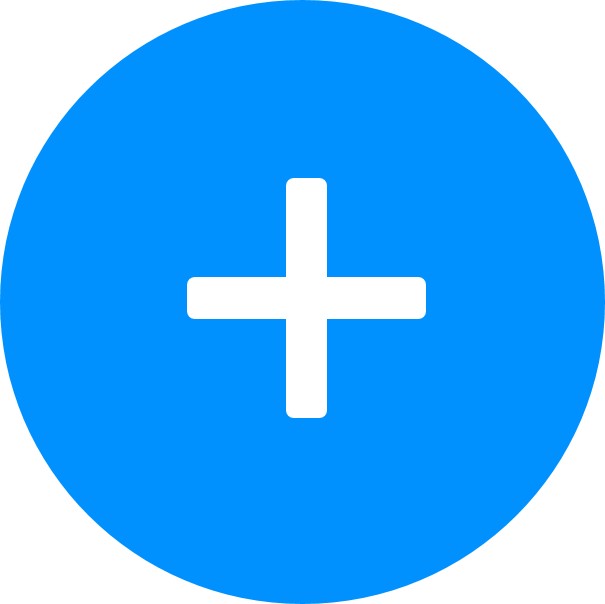Pending Updates/All (Windows)
The Pending Updates/All tab displays a list of all computers which have the Deploy Agent and all supported applications currently installed on the target computers.
To display online or all computers, click  then select Online Only > All or Outdated Only.
then select Online Only > All or Outdated Only.
 then select Online Only > All or Outdated Only.
then select Online Only > All or Outdated Only. To display the list of applications in groups or ungrouped, click the Grouped By Application button (under Grid Options).
To hide unused apps, click Hide Unused Apps (under Grid Options).
 | Computers that have been set as Cache Servers will display the |
 | Computers that are undergoing maintenance will display the  icon. icon. |
 | Computers that have pending/scheduled tasks will display the  icon. icon.Hover your mouse on the  icon to display the tooltip that lists the total number of scheduled tasks. icon to display the tooltip that lists the total number of scheduled tasks. |
The following information is displayed:
• Computer – Displays the computer name.
• Policy – Displays the current policy for the computer.
 | A policy that is outdated will be displayed in orange text with an Outdated tooltip. |
• Group – Displays the group to which the computer belongs. By default, the computer is assigned to the Default group.
• Tags – Displays all tags assigned to the computer.
• Applications – Displays the list of applications in groups or ungrouped.
Grouped View
By default, pre-defined apps are grouped and displayed by categories along with the total number of apps for each category.
> Configuration
> Custom Apps – This column will only display when custom apps have been created.
> Custom Scripts – This column will only display when custom scripts have been created.
> Winget Apps – This column will only display when winget apps have been added.
> Web Browsers
> Messaging
> Media
> Runtimes
> Imaging
> Documents
> Utilities
> Compression
> Developer Tools
> Online Storage
> Other
> Security
> Older Versions
> Web Conferencing
Under Grouped view, each cell displays the number of installed/outdated apps under each category.
For example, there are 3 apps under Web Browsers. The cell will display '3 installed' when all the web browser apps are up-to-date. If a category has both installed and outdated apps, the cell will display only the number of the outdated apps.
You can update the outdated apps by clicking on the cell containing the outdated apps and then clicking Update on the top right.
To view the apps for a particular category, click the app category. The apps for the selected category will be displayed as well as installed/outdated/failed update status for each app. To return to the previous view, click the X on the category filter.
Ungrouped View
The grid displays each app in a column, the category each app belongs to, the app version that is installed on the computer, and app failed update status for each computer.
Outdated app versions are displayed in orange text. Failed app updates are displayed with an orange cell background.
Action Toolbar
The Action Toolbar provides quick access to important actions for apps and computers. Administrators can perform certain actions directly from the toolbar.
Action Toolbar for Computers
To view the Action Toolbar for a computer, click on the computer name.
Actions
• Outdated Applications – Displays the number of outdated apps installed on the computer. Click Update All to update all the outdated apps.
• Computer Actions – Click Remote to perform remote actions on the selected computer, Shutdown the computer, or Restart the computer.
Remote actions include:
> Log off User – This option forces users to log off during RDP/VNC remote sessions. Once you have enabled this option, you can select to warn the user before being logged off and set up to a maximum of 5 minutes to allow the user to save their current work. Otherwise, the active user will be logged off and any unsaved work will be lost.
If the computer is online, you have the option to set the schedule for Restart/Shutdown. To configure more options, click Restart or Shutdown and click Options. Refer to Schedule for more information.
> RDP
> VNC
> VNC Setup
 | VNC should be installed on the target computer as well as the computer where Deploy console is run. If VNC is not installed on the machine where Deploy console is run, you cannot connect to the targeted computer. Complete the following steps to install and set up VNC on the target computer: 1. Click VNC or VNC Setup. You will see a list of computers without VNC on the network. 2. Select a single computer by clicking on the name of the computer. To select multiple computers, use CTRL+CLICK or SHIFT+CLICK (CMD+CLICK for Mac). To select all computers, click Select All Computers. 3. Click Next. 4. Enter a password then click Setup. This will install VNC on the target computer. When the target computer you are connecting to is active and currently logged on, the user will be prompted to approve the request to connect. When there is no response to the request to connect within 60 seconds, the request is denied. When the target computer is logged on but locked, the request to connect is automatically allowed. 5. Click OK to complete the setup for remote connection. VNC is now set up. |
> View Screen – Click to view the screen(s) of the selected computer. If there are multiple monitors attached to the computer, select to view any monitor (1 or 2) or all monitors. You can also set to refresh the view every X seconds.
• Wake-on-LAN – This option is only available for offline computers. Select whether to Wake Now or Set Up Wake-on-LAN.
 | Wake-on-LAN needs to be enabled in the BIOS. |
> Wake Now – Click to wake up the offline computer through the LMS computer.
> Set Up Wake-on-LAN – Click to designate an LMS computer that will be used to wake up the offline computer.
 | Complete the following steps to install and set up Last Man Standing computers: 1. Click Set Up Wake-on-LAN. 2. Select the computer to be designated as Last Man Standing. 3. Click OK to complete the setup. Last Man Standing computers will need to be online to wake any computers on a subnet. |
• View Installed Applications – Click View Installed Applications to view the complete list of all installed Applications on the selected computer.
• Windows Updates – Click Patch Scan to perform a scan of Windows Updates installed or outstanding on the computer.
• Tag Computer – Displays the tags assigned to the computer, or assign new tags if desired.
• Apply App Preset – Refer to App Presets.
• Configuration Management – Refer to Configuration Management.
• Change Group – Click to change the Group that the computer is assigned to.
To create a new group, type the name of the new group you wish to create in the Create New Group field and click +.
• Change Policy – Click to change the policy assigned to the computer.
After changing the policy assigned to computers, click  to save your changes.
to save your changes.
 to save your changes.
to save your changes.• Set as Cache Server – Click to set the computer as cache server. This saves internet bandwidth by downloading software updates and Windows Updates and distributing them to computers, removing the need for the computers to perform their own individual downloads.
> Use for Anti-Virus Definitions Updates – Click to set the computer as cache server for Anti-Virus Definitions Updates.
• Remove Agent – Click Remove Agent to remove the Deploy Agent and all services from the target computer. When the Deploy Agent is removed, you will need to re-install it on the computer to see the computer on the console.
• Delete Computer – This option is only available for offline computers. Click to delete a computer. This option will only delete the computer from the console but not uninstall the Deploy Agent from the computer.
If Deploy Agent is still installed, the computer will report back again when it comes online.
You can perform actions for multiple computers by clicking on  beside the computer name in the Action Toolbar, and choosing to display the list of computers by categories: By Computer, By Group, By Tag, By Policy. Select the computers from the drop-down list and click Select Computers, or click Select All Computers to select all the computers. Only online computers will be reflected in the Action Toolbar.
beside the computer name in the Action Toolbar, and choosing to display the list of computers by categories: By Computer, By Group, By Tag, By Policy. Select the computers from the drop-down list and click Select Computers, or click Select All Computers to select all the computers. Only online computers will be reflected in the Action Toolbar.
Action Toolbar for Apps
To view the Action Toolbar for an app, click on the app name.
When an app is up-to-date, the Action Toolbar displays the category that the app belongs to, as well as the current version of the app.
When an app has outdated versions installed on any computer, the Action Toolbar displays the number of computers that have the outdated app version installed. The Action Toolbar also displays the total number of computers that have the app installed (outdated and up-to-date), and the percentage of the up-to-date installation.
Actions
• Update All – Click Update All to update the app on the machines that have the outdated app version installed.
This option will only update the app on computers that already have the app installed and will not install the app on the computers.
• Install All – Click Install All to install the app on computers that do not have the app installed.
This option will not update any outdated versions that have been installed on the computers.
• Uninstall All – Click Uninstall to remove the app from all the computers.
This option will uninstall all versions of the app, including the outdated version, from the computer.
The Action Toolbar for custom apps displays the category that the app belongs to, as well as the current version of the app. Click Delete to delete the custom app, or click View Details to display the following information for each custom app:
• URL
• OS Architecture (Windows only)
• Install Command Line (Windows only)
• Uninstall Command Line (Windows only)
• Restart
• Install Timeout
Action Toolbar for Failed Updates (Windows Only)
To view the Action Toolbar for failed updates, click on the cell of the app with the Failed status. The Action Toolbar will display the reason for the update failure as well as options to clear or retry installing the failed updates.
Actions
• Clear Failed – Click this option to clear the failed app status on the selected computer.
• Retry – Click this option to retry updating/installing the failed app on the selected computer.
• Clear All Failed – Click this option to clear all failed app status on all computers.
• Retry All Failed – Click this option to retry updating/installing all failed apps on all computers.
Action Toolbar for Scripts
To view the Action Toolbar for script, click on the script name.
The Action Toolbar for custom scripts displays the category that the script belongs to.
Actions
• Delete – Click this option to delete the custom script
• Edit Details – Click this option edit the URL, Type, and Command Line for each custom script.
• Run All – Click this option to run the script on all computers.
Install / Uninstall / Update Apps
To install, uninstall, or update apps, click on the cell of the selected apps, and click Install, Uninstall, or Update.
Clicking Install will only install the app on computers that do not have the app installed. This option will not update any outdated versions that have been installed on the computers.
Clicking Uninstall will remove the app from all the computers. This option will delete all versions of the app, including the outdated version, from the computers.
Clicking Update will only update the app on the computers that have the outdated app version installed. This option will not install the app on the computers that do not have any previous versions of the app installed.